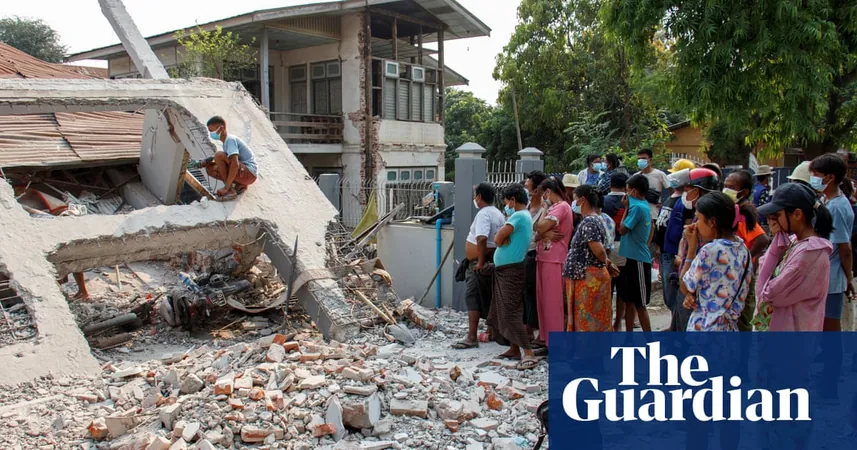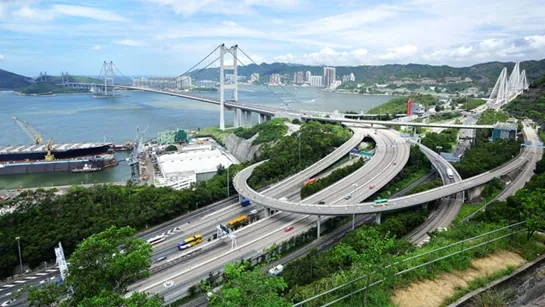
Myanmar Earthquake Death Toll Surpasses 2,000 Amidst Overwhelmed Health Services and Ongoing Conflict
2025-03-31
Author: Jia
Overview of the Situation
The aftermath of the devastating earthquake in Myanmar has resulted in a staggering death toll, officially reported by the junta to exceed 2,000, with an alarming number of people still unaccounted for. The World Health Organization (WHO) has voiced concerns that the nation’s healthcare system is struggling under the weight of this catastrophe.
Challenges in Rescue Operations
As rescue operations continue, significant obstacles impede progress, including severely damaged infrastructure such as roads and bridges, unreliable communication channels, and the complexities arising from ongoing civil unrest within the country. The WHO indicated that the emergency has led to dire shortages in medical supplies and services, particularly trauma and surgical care, which have become urgently needed as healthcare facilities grapple with an overwhelming influx of injuries.
Statistics and Estimates
The latest updates reveal that 2,056 lives have been lost, with an additional 270 individuals still missing and around 3,900 injured. U.S. Geological Survey predictive modelling estimates that the final death toll could climb above 10,000.
Impact on Healthcare Facilities
In a tragic escalation, at least three hospitals have been completely destroyed, while 22 others have suffered partial damage, leaving communities to cope with an already catastrophic health crisis. An urgent funding appeal of $8 million was issued by the WHO to aid emergency responses.
National Mourning and Humanitarian Response
In response to this disaster, Myanmar has declared a week-long period of national mourning, where flags will be flown at half-mast in remembrance of the lives lost. The earthquake has wreaked havoc across central Myanmar, affecting numerous structures, including homes, schools, and hospitals. In Mandalay, the second-largest city, more than a thousand-bed hospital has been evacuated due to extensive damage, with hundreds of patients being treated in makeshift shelters outside.
Tragic Events in Mandalay
A poignant scene emerged from the U Hla Thein monastery in Mandalay, where a religious exam was underway when the earthquake struck. Out of the 270 monks present, 70 managed to escape, but 50 have been confirmed dead, with 150 still missing.
Communication and International Assistance
Communication remains heavily strained in many affected areas, compounded by ongoing civil war conditions, which leave vast regions beyond military control. Notably, Myanmar’s junta made a rare appeal for international assistance, prompting countries such as China and Russia to provide aid. Additionally, India, Thailand, Malaysia, and Singapore are extending their support. However, Taiwan’s rescue team is still on standby, facing complications regarding entry, likely due to geopolitical sensitivities surrounding China.
Pre-Existing Humanitarian Needs
The timing of this disaster is particularly critical as many humanitarian organizations were already scaling back operations amidst cuts to US foreign aid programs. Almost 20 million people in Myanmar were struggling with humanitarian needs even before the earthquake, and the UN has warned that this new catastrophe threatens to exacerbate existing crises fueled by conflict and displacement stemming from the military coup in 2021.
Current Situation and Outlook
As Myanmar grapples with the aftermath, the junta continues to face armed resistance, with ongoing airstrikes reported in various regions, demonstrating no reprieve even after this tragic earthquake.
Impact in Neighboring Thailand
In neighboring Thailand—also affected by the quake—investigations are underway concerning a construction collapse in Bangkok that has claimed at least 19 lives, with many still missing. Deputy Governor Tavida Kamolvej indicated that the likelihood of finding more survivors is dwindling, leading to further criticism of the government’s disaster response strategies.
International Community Response
As Myanmar navigates through this heartbreaking chapter, the international community watches closely, recognizing that immediate humanitarian response is vital to prevent further deterioration of conditions for the vulnerable populations impacted by both natural disaster and ongoing conflict.





 Brasil (PT)
Brasil (PT)
 Canada (EN)
Canada (EN)
 Chile (ES)
Chile (ES)
 Česko (CS)
Česko (CS)
 대한민국 (KO)
대한민국 (KO)
 España (ES)
España (ES)
 France (FR)
France (FR)
 Hong Kong (EN)
Hong Kong (EN)
 Italia (IT)
Italia (IT)
 日本 (JA)
日本 (JA)
 Magyarország (HU)
Magyarország (HU)
 Norge (NO)
Norge (NO)
 Polska (PL)
Polska (PL)
 Schweiz (DE)
Schweiz (DE)
 Singapore (EN)
Singapore (EN)
 Sverige (SV)
Sverige (SV)
 Suomi (FI)
Suomi (FI)
 Türkiye (TR)
Türkiye (TR)
 الإمارات العربية المتحدة (AR)
الإمارات العربية المتحدة (AR)